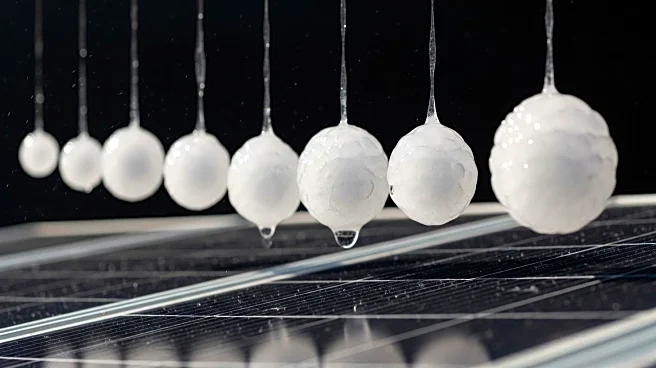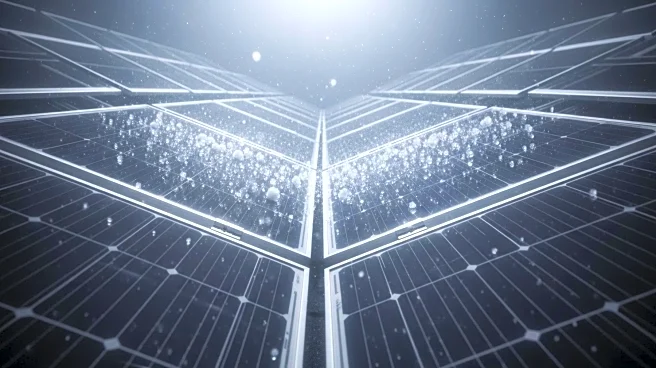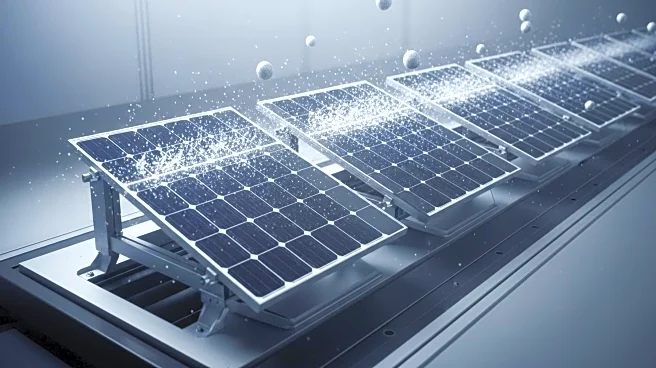What is the story about?
What's Happening?
VDE Americas, in collaboration with the Renewable Energy Test Center (RETC), has launched the Hail Resiliency Curve (HRC) Test, a new protocol designed to assess solar panel resilience against hail damage. This test simulates real-world hailstorm conditions, providing a comprehensive evaluation of solar panels by subjecting them to impacts from various hailstone sizes and wind speeds. The HRC Test aims to offer solar panel manufacturers, project developers, and insurance providers detailed data on the breaking point of solar panels, allowing for optimized product designs and more accurate risk assessments. The initiative is expected to fill a significant gap in the solar industry by providing actionable data on solar panel hail resilience.
Why It's Important?
The introduction of the HRC Test is significant for the solar industry as it addresses a critical vulnerability of solar panels—hail damage. By providing detailed insights into the resilience of different solar panel models, the test enables manufacturers to improve product designs, potentially leading to more durable and reliable solar panels. This advancement could reduce maintenance costs and insurance premiums for solar projects, making solar energy a more attractive investment. Additionally, the test supports the broader adoption of solar energy by enhancing the reliability of solar infrastructure, which is crucial for the transition to renewable energy sources.
What's Next?
As the HRC Test gains traction, it is likely to influence the solar panel manufacturing process, encouraging companies to adopt more resilient designs. Insurance providers may also adjust their coverage and premium structures based on the empirical data provided by the test, potentially leading to cost savings for solar project developers. The test could become a standard in the industry, prompting other testing organizations to develop similar protocols. This development may also lead to increased collaboration between solar panel manufacturers and testing organizations to further enhance the durability of solar products.
AI Generated Content
Do you find this article useful?














